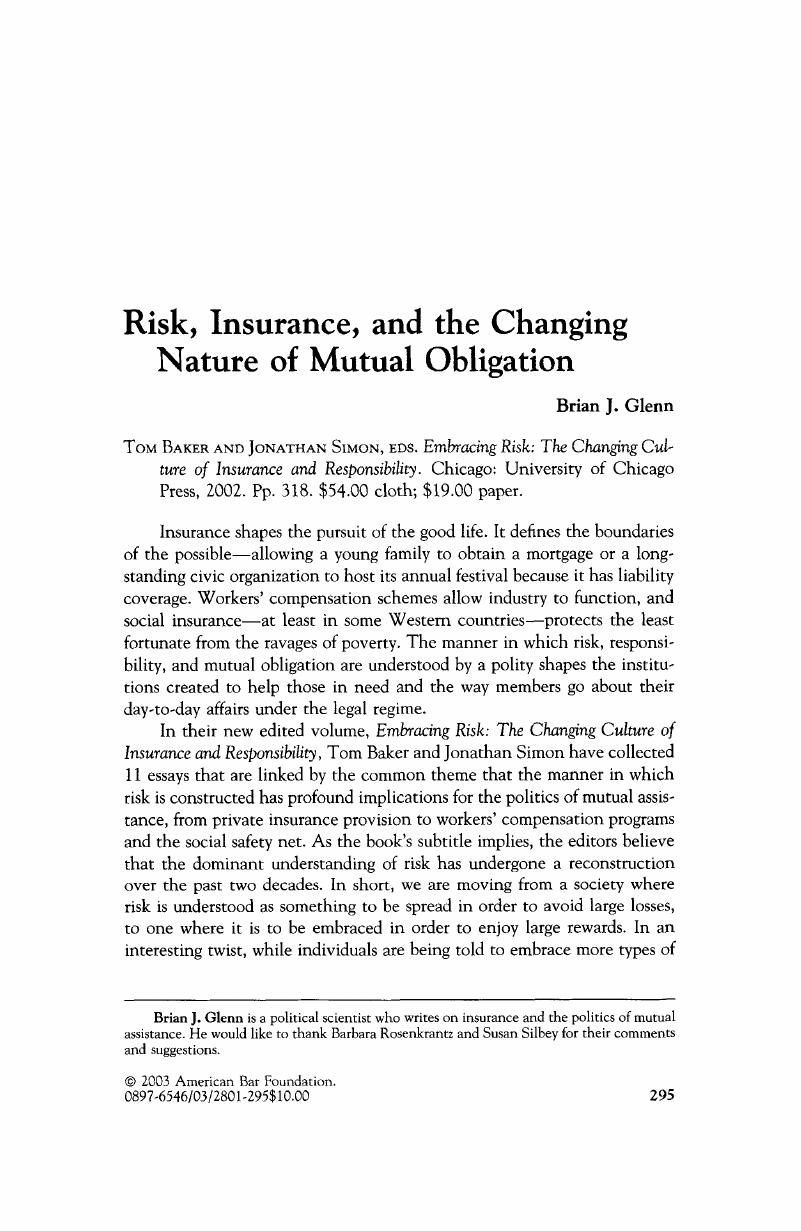Crossref Citations
This article has been cited by the following publications. This list is generated based on data provided by Crossref.
Glenn, Brian J.
2003.
Postmodernism: The Basis of Insurance.
Risk Management and Insurance Review,
Vol. 6,
Issue. 2,
p.
131.



